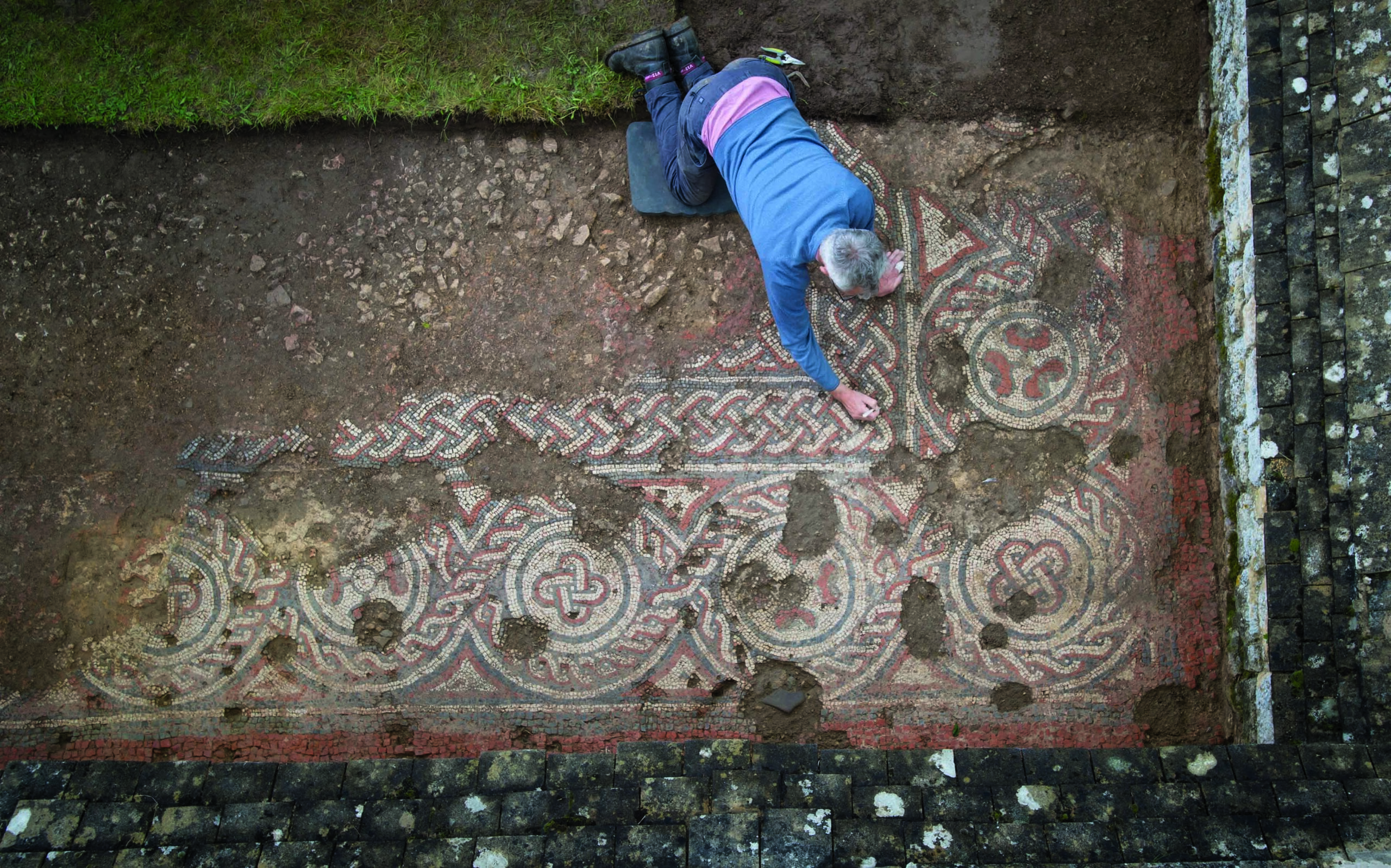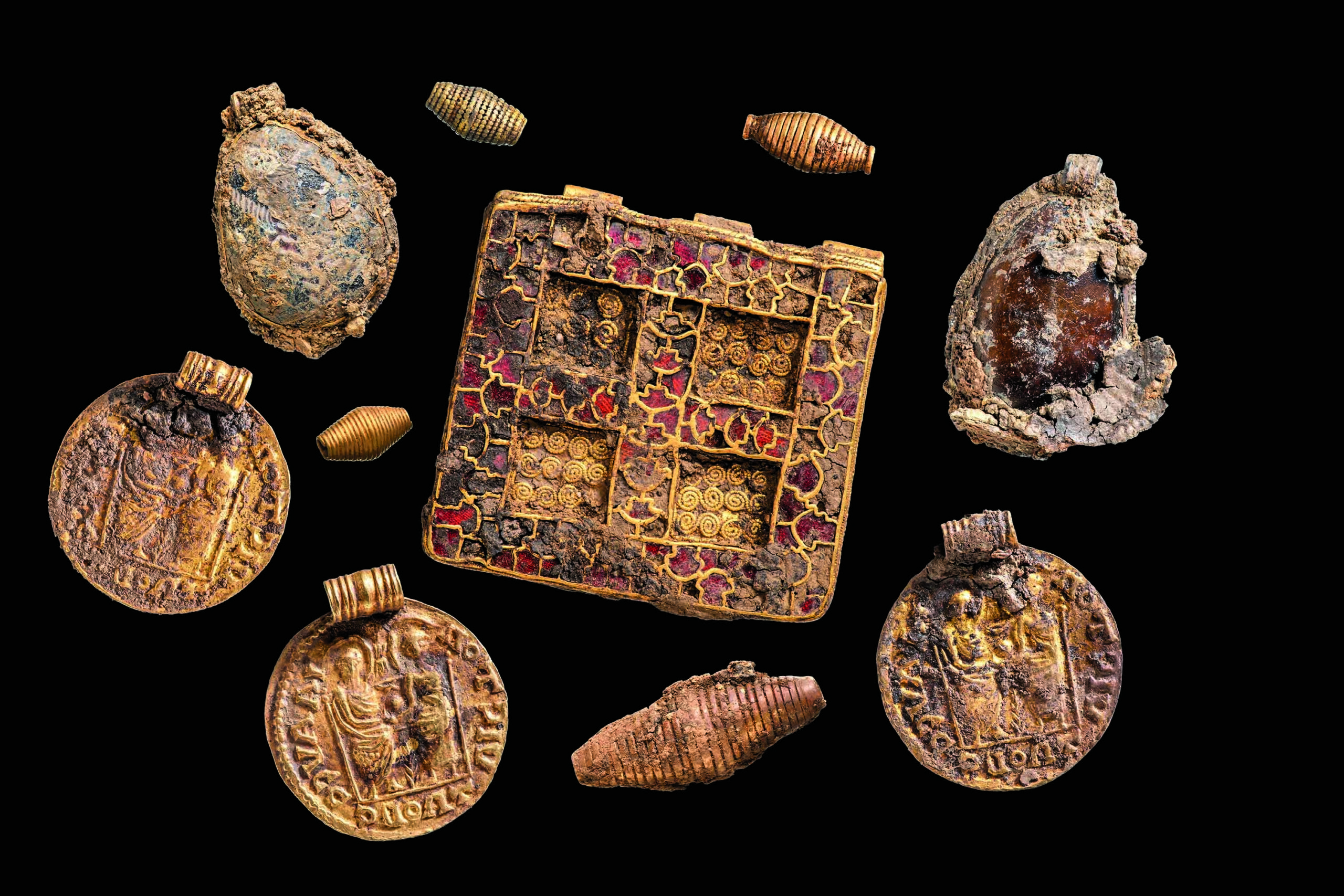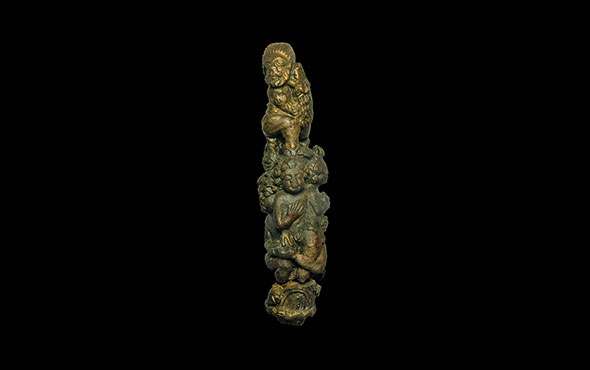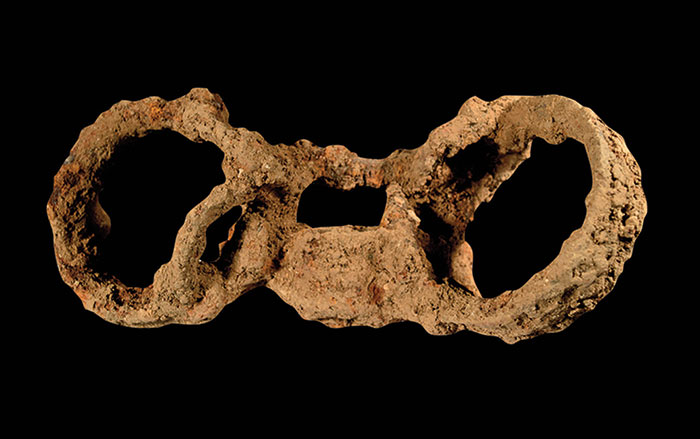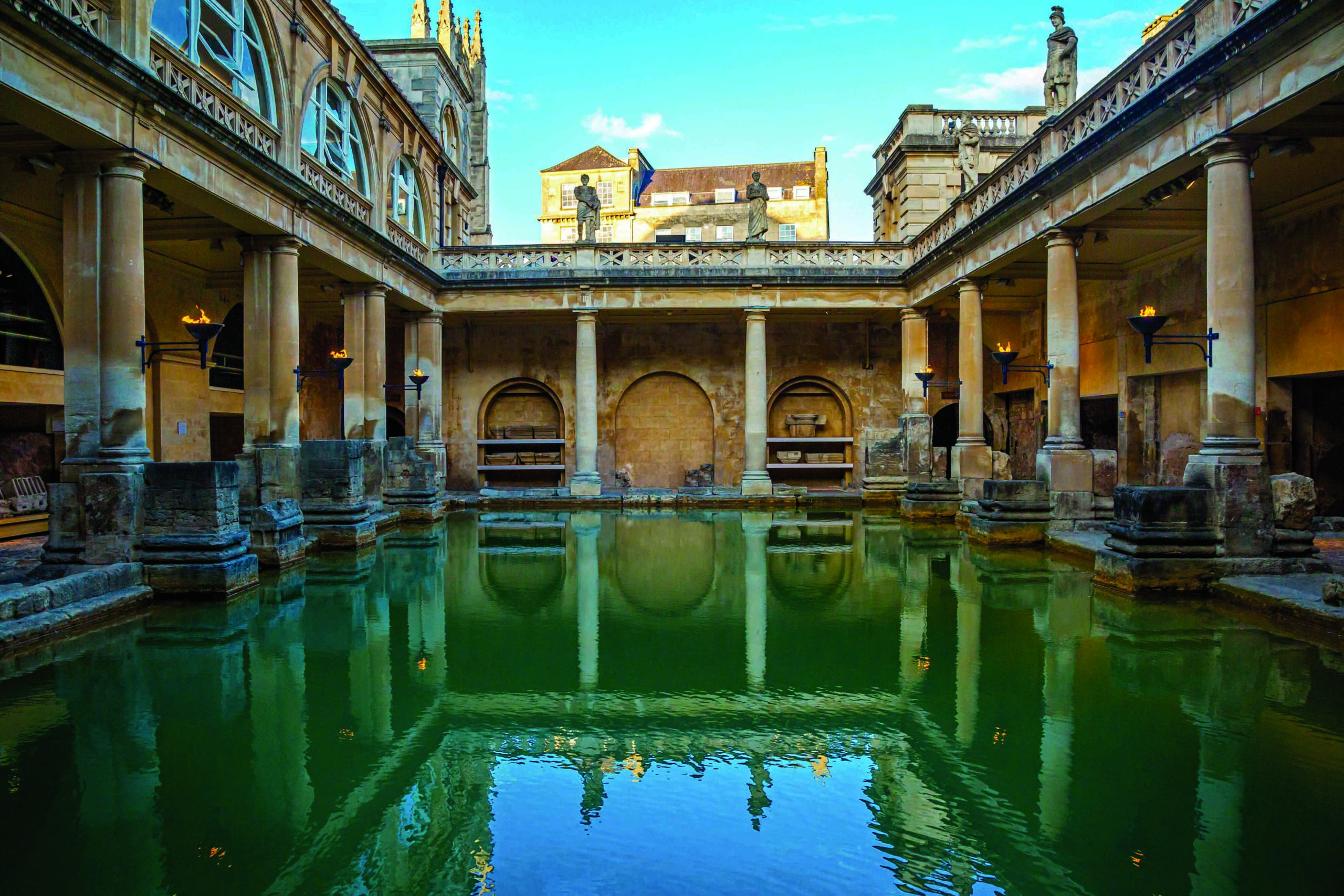
RUTLAND, ENGLAND—According to a statement released by the University of Leicester, a mosaic depicting scenes from the Iliad was found at a villa site dated to the late Roman period in England’s East Midlands. The landowner’s son spotted some pottery while on a walk last year and contacted local authorities. Measuring about 36 feet long by 23 feet wide, the three-paneled mosaic is located in what is thought to have been a large dining or entertainment area, and features Achilles and his battle with Hector at the conclusion of the Trojan War. John Thomas of the University of Leicester Archaeological Services said the mosaic must have been commissioned by a wealthy person with knowledge of classical literature. Surveys suggest the villa site, which is surrounded by boundary ditches, is complete and includes aisled barns, circular structures, and a possible bath house. Breaks in the mosaic, fire damage, and human remains in the rubble covering it suggest that the site was reused during the medieval period. To read about a fifth-century A.D. mosaic found at a Roman villa in Gloucestershire, go to "After the Fall."


